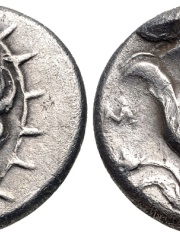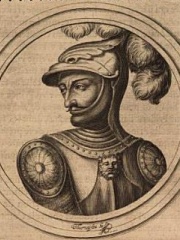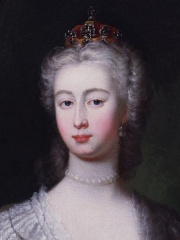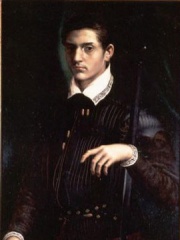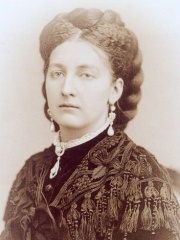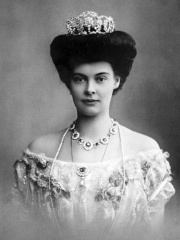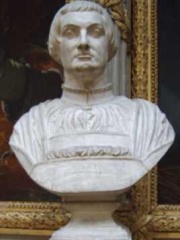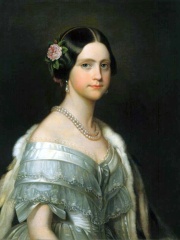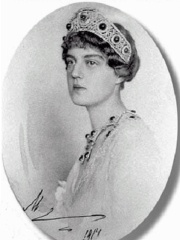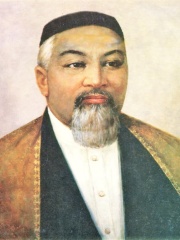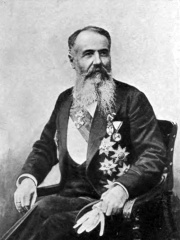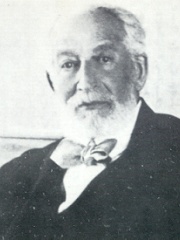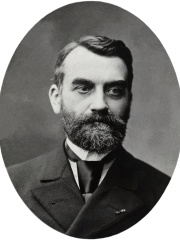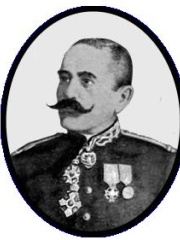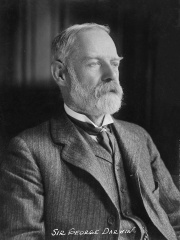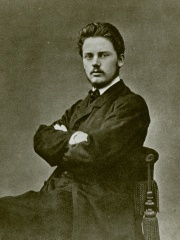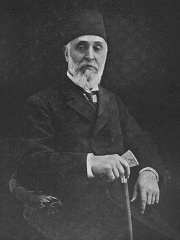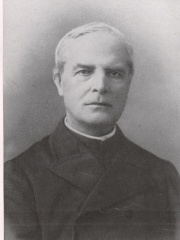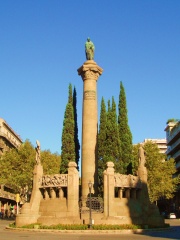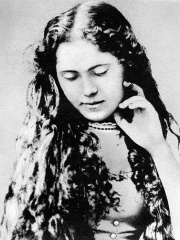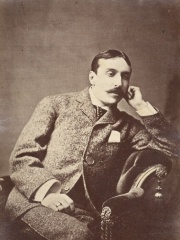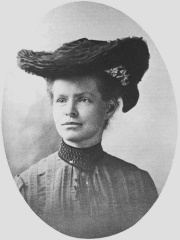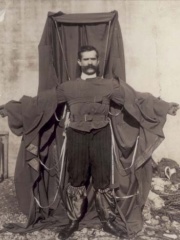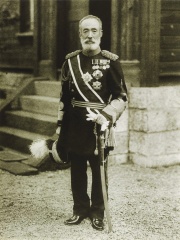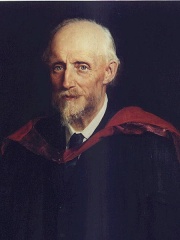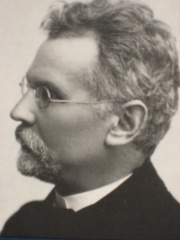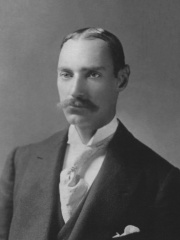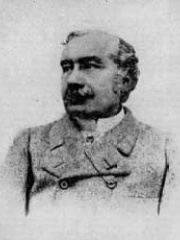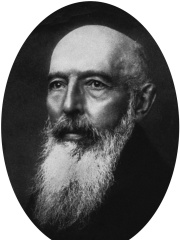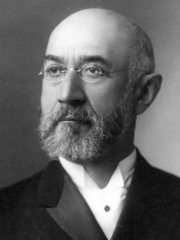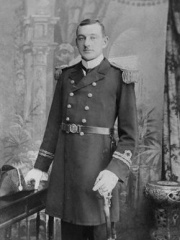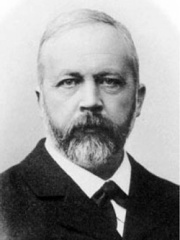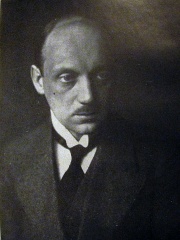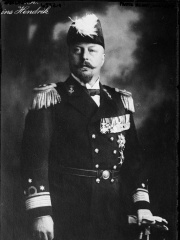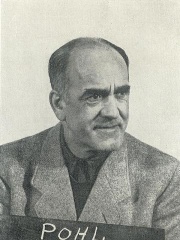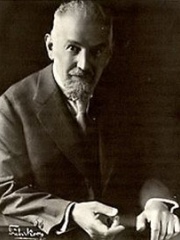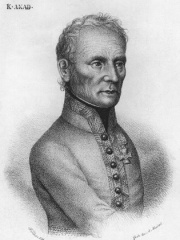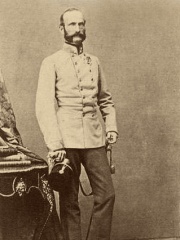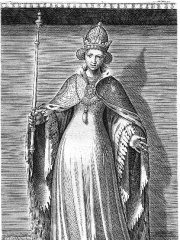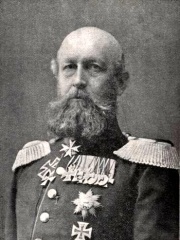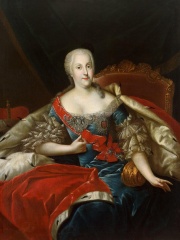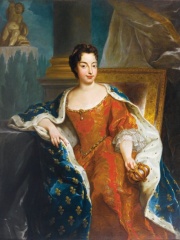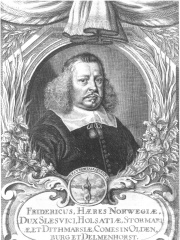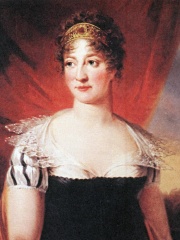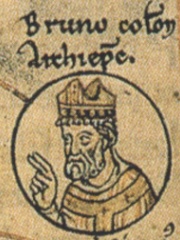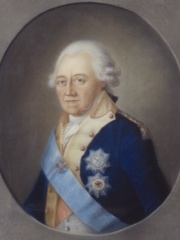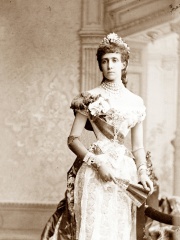NOBLEMAN
Princess Marie of Hohenzollern-Sigmaringen
1845 - 1912
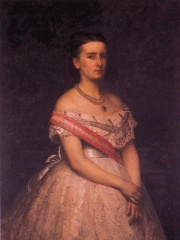
 Princess Marie of Hohenzollern-Sigmaringen
Princess Marie of Hohenzollern-Sigmaringen
Princess Marie Luise Alexandra Karoline of Hohenzollern-Sigmaringen (17 November 1845 – 26 November 1912), later Countess of Flanders, was a princess of Hohenzollern-Sigmaringen, later simply of Hohenzollern. Read more on Wikipedia
Since 2007, the English Wikipedia page of Princess Marie of Hohenzollern-Sigmaringen has received more than 158,791 page views. Her biography is available in 25 different languages on Wikipedia (up from 24 in 2019). Princess Marie of Hohenzollern-Sigmaringen is the 231st most popular nobleman (down from 211th in 2019), the 1,071st most popular biography from Germany (down from 921st in 2019) and the 30th most popular German Nobleman.
Marie of Hohenzollern-Sigmaringen is most famous for being the first wife of King Edward VII of the United Kingdom.
Memorability Metrics
160k
Page Views (PV)
61.15
Historical Popularity Index (HPI)
25
Languages Editions (L)
8.73
Effective Languages (L*)
1.88
Coefficient of Variation (CV)
Page views of Princess Marie of Hohenzollern-Sigmaringens by language
Over the past year Princess Marie of Hohenzollern-Sigmaringen has had the most page views in the English wikipedia edition with 28,550 views, followed by French (8,443), and German (6,271). In terms of yearly growth of page views the top 3 wikpedia editions are Georgian (66.46%), Mingrelian (30.27%), and Arabic (23.19%)
Among NOBLEMEN
Among noblemen, Princess Marie of Hohenzollern-Sigmaringen ranks 231 out of 1,415. Before her are Memnon of Rhodes, Thomas, Count of Savoy, Princess Augusta of Saxe-Gotha, Alfonso II d'Este, Duke of Ferrara, Maria Vittoria dal Pozzo, and Queen Letizia of Spain. After her are Duchess Cecilie of Mecklenburg-Schwerin, Anthony, Duke of Brabant, Princess Maria Amélia of Brazil, Louis II, Duke of Bavaria, Grand Duchess Maria Pavlovna of Russia, and Prince John of the United Kingdom.
Most Popular Noblemen in Wikipedia
Go to all RankingsMemnon of Rhodes
380 BC - 333 BC
HPI: 61.35
Rank: 225
Thomas, Count of Savoy
1178 - 1233
HPI: 61.33
Rank: 226
Princess Augusta of Saxe-Gotha
1719 - 1772
HPI: 61.22
Rank: 227
Alfonso II d'Este, Duke of Ferrara
1533 - 1597
HPI: 61.20
Rank: 228
Maria Vittoria dal Pozzo
1847 - 1876
HPI: 61.18
Rank: 229
Queen Letizia of Spain
1972 - Present
HPI: 61.17
Rank: 230
Princess Marie of Hohenzollern-Sigmaringen
1845 - 1912
HPI: 61.15
Rank: 231
Duchess Cecilie of Mecklenburg-Schwerin
1886 - 1954
HPI: 61.06
Rank: 232
Anthony, Duke of Brabant
1384 - 1415
HPI: 61.05
Rank: 233
Princess Maria Amélia of Brazil
1831 - 1853
HPI: 60.98
Rank: 234
Louis II, Duke of Bavaria
1229 - 1294
HPI: 60.96
Rank: 235
Grand Duchess Maria Pavlovna of Russia
1890 - 1958
HPI: 60.93
Rank: 236
Prince John of the United Kingdom
1905 - 1919
HPI: 60.89
Rank: 237
Contemporaries
Among people born in 1845, Princess Marie of Hohenzollern-Sigmaringen ranks 19. Before her are Abai Qunanbaiuly, Nikola Pašić, Edmond James de Rothschild, Paul Vidal de La Blache, Ion Ivanovici, and George Darwin. After her are Gustaf de Laval, Ahmet Tevfik Pasha, Franz Ehrle, Jacint Verdaguer, Laura Marx, and José Maria de Eça de Queirós. Among people deceased in 1912, Princess Marie of Hohenzollern-Sigmaringen ranks 26. Before her are James Paul Moody, Nettie Stevens, George Darwin, Franz Reichelt, Nogi Maresuke, and Osborne Reynolds. After her are Bolesław Prus, John Jacob Astor IV, Paul-Émile Lecoq de Boisbaudran, Gerhard Armauer Hansen, Isidor Straus, and Henry Tingle Wilde.
Others Born in 1845
Go to all RankingsAbai Qunanbaiuly
WRITER
1845 - 1904
HPI: 65.72
Rank: 13
Nikola Pašić
POLITICIAN
1845 - 1926
HPI: 65.46
Rank: 14
Edmond James de Rothschild
SOCIAL ACTIVIST
1845 - 1934
HPI: 64.82
Rank: 15
Paul Vidal de La Blache
GEOGRAPHER
1845 - 1918
HPI: 63.24
Rank: 16
Ion Ivanovici
COMPOSER
1845 - 1902
HPI: 62.55
Rank: 17
George Darwin
ASTRONOMER
1845 - 1912
HPI: 62.27
Rank: 18
Princess Marie of Hohenzollern-Sigmaringen
NOBLEMAN
1845 - 1912
HPI: 61.15
Rank: 19
Gustaf de Laval
ENGINEER
1845 - 1913
HPI: 60.93
Rank: 20
Ahmet Tevfik Pasha
POLITICIAN
1845 - 1936
HPI: 60.80
Rank: 21
Franz Ehrle
RELIGIOUS FIGURE
1845 - 1934
HPI: 60.55
Rank: 22
Jacint Verdaguer
WRITER
1845 - 1902
HPI: 60.53
Rank: 23
Laura Marx
WRITER
1845 - 1911
HPI: 60.49
Rank: 24
José Maria de Eça de Queirós
WRITER
1845 - 1900
HPI: 60.22
Rank: 25
Others Deceased in 1912
Go to all RankingsJames Paul Moody
MILITARY PERSONNEL
1887 - 1912
HPI: 63.01
Rank: 20
Nettie Stevens
BIOLOGIST
1861 - 1912
HPI: 62.57
Rank: 21
George Darwin
ASTRONOMER
1845 - 1912
HPI: 62.27
Rank: 22
Franz Reichelt
INVENTOR
1879 - 1912
HPI: 61.84
Rank: 23
Nogi Maresuke
MILITARY PERSONNEL
1849 - 1912
HPI: 61.70
Rank: 24
Osborne Reynolds
PHYSICIST
1842 - 1912
HPI: 61.17
Rank: 25
Princess Marie of Hohenzollern-Sigmaringen
NOBLEMAN
1845 - 1912
HPI: 61.15
Rank: 26
Bolesław Prus
WRITER
1847 - 1912
HPI: 60.65
Rank: 27
John Jacob Astor IV
WRITER
1864 - 1912
HPI: 60.54
Rank: 28
Paul-Émile Lecoq de Boisbaudran
CHEMIST
1838 - 1912
HPI: 60.38
Rank: 29
Gerhard Armauer Hansen
PHYSICIAN
1841 - 1912
HPI: 60.25
Rank: 30
Isidor Straus
POLITICIAN
1845 - 1912
HPI: 59.43
Rank: 31
Henry Tingle Wilde
POLITICIAN
1872 - 1912
HPI: 59.37
Rank: 32
In Germany
Among people born in Germany, Princess Marie of Hohenzollern-Sigmaringen ranks 1,071 out of 7,253. Before her are Julius Wellhausen (1844), Georg Kaiser (1878), Duke Henry of Mecklenburg-Schwerin (1876), Oswald Pohl (1892), William Stern (1871), and Karl Mack von Leiberich (1752). After her are Wolfgang Overath (1943), Georg-Hans Reinhardt (1887), Prince Alexander of Hesse and by Rhine (1823), Margaret II, Countess of Hainaut (1311), Frederick Francis II, Grand Duke of Mecklenburg-Schwerin (1823), and Oskar Schlemmer (1888).
Others born in Germany
Go to all RankingsJulius Wellhausen
HISTORIAN
1844 - 1918
HPI: 61.18
Rank: 1,065
Georg Kaiser
WRITER
1878 - 1945
HPI: 61.17
Rank: 1,066
Duke Henry of Mecklenburg-Schwerin
POLITICIAN
1876 - 1934
HPI: 61.17
Rank: 1,067
Oswald Pohl
POLITICIAN
1892 - 1951
HPI: 61.15
Rank: 1,068
William Stern
PSYCHOLOGIST
1871 - 1938
HPI: 61.15
Rank: 1,069
Karl Mack von Leiberich
MILITARY PERSONNEL
1752 - 1828
HPI: 61.15
Rank: 1,070
Princess Marie of Hohenzollern-Sigmaringen
NOBLEMAN
1845 - 1912
HPI: 61.15
Rank: 1,071
Wolfgang Overath
SOCCER PLAYER
1943 - Present
HPI: 61.12
Rank: 1,072
Georg-Hans Reinhardt
MILITARY PERSONNEL
1887 - 1963
HPI: 61.12
Rank: 1,073
Prince Alexander of Hesse and by Rhine
POLITICIAN
1823 - 1888
HPI: 61.12
Rank: 1,074
Margaret II, Countess of Hainaut
POLITICIAN
1311 - 1356
HPI: 61.11
Rank: 1,075
Frederick Francis II, Grand Duke of Mecklenburg-Schwerin
POLITICIAN
1823 - 1883
HPI: 61.11
Rank: 1,076
Oskar Schlemmer
PAINTER
1888 - 1943
HPI: 61.11
Rank: 1,077
Among NOBLEMEN In Germany
Among noblemen born in Germany, Princess Marie of Hohenzollern-Sigmaringen ranks 30. Before her are Joanna Elisabeth of Holstein-Gottorp (1712), Princess Marianne of the Netherlands (1810), Maria Anna Victoria of Bavaria (1660), Frederick III, Duke of Holstein-Gottorp (1597), Hedvig Elisabeth Charlotte of Holstein-Gottorp (1759), and Princess Augusta of Saxe-Gotha (1719). After her are Duchess Cecilie of Mecklenburg-Schwerin (1886), Louis II, Duke of Bavaria (1229), Christian Albert, Duke of Holstein-Gottorp (1641), Bruno the Great (925), Frederick II Eugene, Duke of Württemberg (1732), and Infanta Maria Theresa of Portugal (1855).
Joanna Elisabeth of Holstein-Gottorp
1712 - 1760
HPI: 62.04
Rank: 24
Princess Marianne of the Netherlands
1810 - 1883
HPI: 61.77
Rank: 25
Maria Anna Victoria of Bavaria
1660 - 1690
HPI: 61.74
Rank: 26
Frederick III, Duke of Holstein-Gottorp
1597 - 1659
HPI: 61.55
Rank: 27
Hedvig Elisabeth Charlotte of Holstein-Gottorp
1759 - 1818
HPI: 61.35
Rank: 28
Princess Augusta of Saxe-Gotha
1719 - 1772
HPI: 61.22
Rank: 29
Princess Marie of Hohenzollern-Sigmaringen
1845 - 1912
HPI: 61.15
Rank: 30
Duchess Cecilie of Mecklenburg-Schwerin
1886 - 1954
HPI: 61.06
Rank: 31
Louis II, Duke of Bavaria
1229 - 1294
HPI: 60.96
Rank: 32
Christian Albert, Duke of Holstein-Gottorp
1641 - 1695
HPI: 60.85
Rank: 33
Bruno the Great
925 - 965
HPI: 60.84
Rank: 34
Frederick II Eugene, Duke of Württemberg
1732 - 1797
HPI: 60.79
Rank: 35
Infanta Maria Theresa of Portugal
1855 - 1944
HPI: 60.65
Rank: 36
